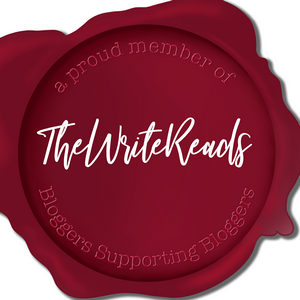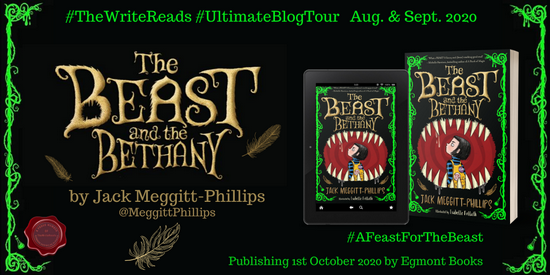The Beast and the Bethanyby Jack Meggitt Phillips, Isabelle Follath (Illustrator) eARC, 240 pg. Read: September 14, 2020 |

What’s The Beast and the Bethany About?
Ebenezer Tweezer has one goal in life—to keep on living. And he’s been doing a good job of that for over five centuries. He’s able to do this because of potions given to him by a magical Beast he met as a child. To keep the potions coming, he has to bring food to the Beast (who is only slightly more mobile than a caged bird). In return, the Beast magics money, treasures, and other gifts for Ebenezer.
The thing is, The Beast has peculiar tastes—monkeys, cacti, Ebenezer’s beloved cat, endangered species, and so on. Now, it has a specific task for Ebenezer. The Beast wants to eat a human child. A nice plump one with rosy cheeks. Initially horrified, Ebenezer decides that he’s really more interested in prolonging his own life enough that he can probably find a child easily enough.
It’s actually not as easy as he initially thought, but he eventually brings one home and sets to fattening it up a little bit for The Beast. In those few days, Ebenezer starts to think that maybe there are things more important than living to 512.
The Beast
Shockingly, The Beast is the least interesting thing in this book. It’s a large, grey, probably hideous looking, blob with tiny hands and feet. Its mouth is anything but small, much like its appetite. And that’s the problem.
This amorphous and amoral antagonist has an avaricious appetite. It has an overwhelming desire for more and for novelty. It’s not satisfied with being gluttonous, it wants something new, new experiences, new tastes, new flavors. If, like with its first victim in the book, the food happens to be rare, that’s all the better. But what seems to drive it more than anything else is something it hasn’t had before. For parents, caretakers, teachers who like to make young readers think about what they read will probably have a lot of fodder there.
But let’s not get bogged down in that—it’s mean, it’s greedy, and it’s not that bright and fairly helpless. It’s these two things that will help the protagonists.
The Bethany
(I love that the title uses the definite article for her…I can just see the beleaguered teachers at her school doing that. “Oh, you’ve got The Bethany in your class this term? Better you than me…” “Did you hear what The Bethany did today?”)
Bethany is…and I mean this in the strictly technical sense…a horrid, obnoxious, pill. And yes, yes, there are reasons for that, and we ought to understand that and exercise empathy toward her and try to help her. But at the beginning of this book, that’s not the point. The point is that she’s an ill-mannered bully, and that if Ebenezer had to pick a child to feed to the monster, you can certainly grant that she’d make a worthy nominee. Put in a slightly less homicidal way, Bethany is precisely the kind of girl who’d make Mrs. Piggle-Wiggle think of retiring.
Until—and this is the key—until she’s shown some kindness (unintentionally, sure, but that’s not important). When Ebenezer does nice things for her, extends her some courtesy—and inadvertently acts like a friend. That makes all the difference to Bethany, and she responds in kind (and probably ends up losing her definite article along the way). Those parents, caretakers, and teachers I mentioned earlier can really camp out on this point, I’m sure.
Ebenezer Tweezer
When the book starts, it’s easy to write off Ebenezer as merely The Beast’s errand-boy. Sure, a 511-year-old errand boy, but an errand boy nonetheless. Then once you understand what he’s doing and why…well, you lose pretty much all sympathy for him. Sure, some sort of alien, magical creature that only wants to eat is one thing, you can get that impulse. But Ebenezer has sold his metaphorical soul to him, in his Faustian bargain for a long life, Ebenezer has helped facilitate a swath of destruction through this world. And that just seems worse than The Beast’s actions.
And for what? Money, years, and nice things? He might as well be Smaug.
But as soon as you’re about to name him the true villain of the piece, he shows a little bit of a conscience. A teeny, tiny hint of one, but a conscience. Then, like the Grinch’s heart, that conscience grows three sizes. And once he accidentally befriends The Bethany? Suddenly, this villain becomes something approximating a hero. Then when Bethany reciprocates his kindness, his friendship, well, then you can’t help but cheer him on and wish him all the success. Parents, caregivers, teachers—you get where I’m going with this.
Throw in a backstory worthy of Heinz Doofenshmirtz and Ebenezer Tweezer turns out to be a character that could become a favorite after a re-read or two.
A Bit About the Illustrations
I’ve proven time and time again, that I’m just not that good with describing visual art or my reactions to it. So let me start with the simple—I liked Follath’s work, it seemed to fit the flavor and feel of the text. Which is just what you’re looking for, right?
My memory of Quentin Blake’s work is pretty dim, but I can see why people would compare these illustrations to his work (although most of that probably has to do with comparisons to Dahl, see below). But the artist that came to mind—repeatedly—for me while reading this was Jules Feiffer. Stylistically, there’s a lot to distinguish the two—but there’s some quality that I can’t put a name to that made me think of Feiffer.
I’m also not sure how big the art is in hard copy, how much of a page it’ll take up. In my eARC, the illustrations are typically pretty small—like they wouldn’t take up much room on a page. That’s a shame—if that’s true for the hard copy, I’d recommend getting a magnifying lens, so you can take in the detail. If you’re reading an e-copy, you should be able to zoom in/magnify the pictures with a click or a reverse pinch. Do so, you’ll be glad you did.
So, what did I think about The Beast and the Bethany?
I think it’s pretty clear that I liked The Beast and the Bethany—I’ve certainly talked enough about it. It’s a solid story with great characters, told in a clever way—just enough humor and wit to make this truly disturbing tale pretty entertaining and diverting. There’s even a nice little moral or two embedded in the text, but delivered in such a way that the target audience can ignore them so they can focus on Bethany’s efforts not to get eaten.*
* While the morals percolate in the reader’s subconscious, where it’ll do some good.
I’ve seen a lot of comparisons to Roald Dahl used in discussions of this book. Those may be fair and apt, I don’t remember enough of Dahl’s work to make them myself (nothing against the guy, I remember positive experiences with his works, but he was never a favorite). For me, this reads like a latter-day Daniel M. Pinkwater.* I don’t know what kind of audience he has today (I certainly had a hard time finding his stuff when I had kids the right ages), but I remember spending a lot of time in elementary school rereading and rereading books like Lizard Music, The Hoboken Chicken Emergency, I Was a Second Grade Werewolf—which combined horror elements, odd humor, and snappy writing. Just like this book. I couldn’t tell you the last time I thought about him—but I wasn’t far into this book when I started thinking about Pinkwater.
* It may not be fair to say latter-day, as Pinkwater’s still putting out books.
Put another way, this is the kind of book to give a middle grader that you want to turn into an A. Lee Martinez fan. I’m not sure how many people have that as a goal (it’d be a worthy one), but it’d work. If you are an A. Lee Martinez reader and are thinking about reading this book yourself or getting it for someone younger, this is right up your alley.*
* Conversely, if you’re looking for something like this written for adults, check out Martinez.
For laughs, for a warm fuzzy or two, for a little bit of horror, for a fun read for readers of all ages, The Beast and The Bethany is an almost sure-fire winner.

My thanks to The Write Reads for the invitation to participate in this tour and the materials (including the novel from Egmont Publishing via Netgalley) they provided.




wittysarcasticbookclub
I loved this book so much! My oldest is reading The Picture of Dorian Gray this year (one of the perks of creating his curriculum myself ) and I’m going to have him read this afterward because there are definite similarities.
) and I’m going to have him read this afterward because there are definite similarities.
HCNewton
Nice! When I homeschooled I had a hard time with the assigning reading part because I’d always be tempted to assign too much But that was one of my favorite bits.
But that was one of my favorite bits.
wittysarcasticbookclub
I’m going to brag about my oldest for a minute. I figure it’s okay since he won’t see it and I can’t take credit.

He’s in seventh grade age-wise, but he finished high school grammar last year so I decided to do literature appreciation this year. I couldn’t find a curriculum I liked, so I cobbled one together. He loves books so I got lucky there.
HCNewton
wow! You should brag on that kid!!
HCNewton
(especially when he won’t see it and won’t “Moooommmmmm!” you for doing it.)
wittysarcasticbookclub
He inherited my lack of common sense , though, son it all evens out in the end. Ha ha!